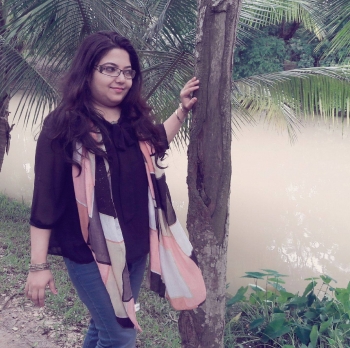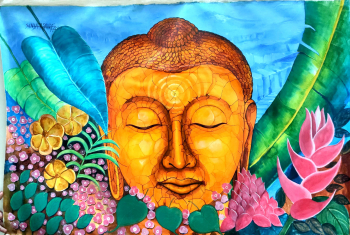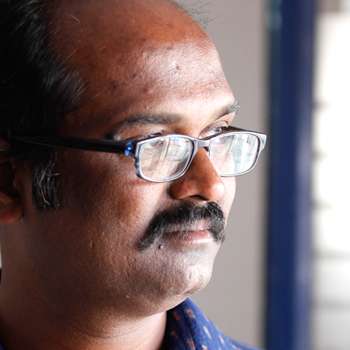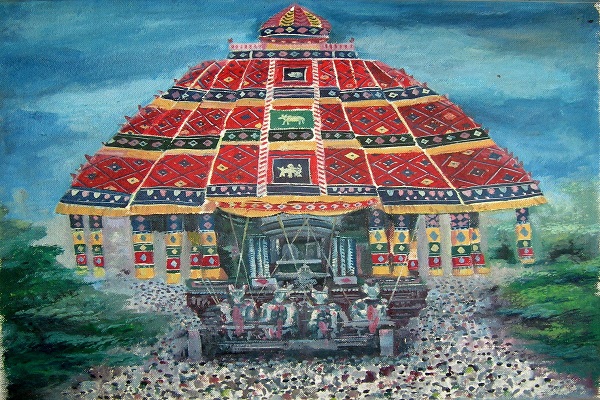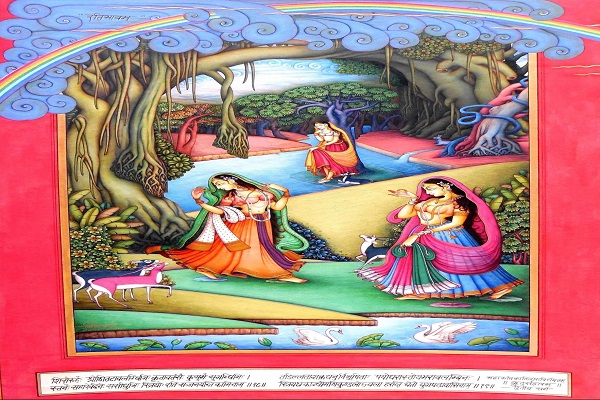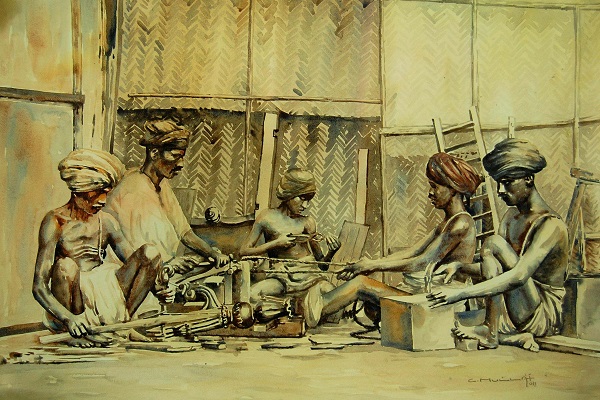
Imagine stepping into an Indian art gallery and being stunned by a painting that combines traditional Indian art forms with modern painting methods. The delicate details and brilliant colors attract you, but so does the blend of classic and modern designs. In Indian art galleries both nationally and globally, the practice of combining traditional Indian art forms and methods with modern paintings is gaining traction. It reflects India's rich cultural legacy as well as the inventive energy of present-day artists.
In this post, we will look at how traditional Indian art and modern painting methods are combined in Indian art galleries. We will investigate the cultural relevance of this movement, as well as its growing prominence in the national and worldwide art scene. We will show the unique aesthetic expression that arises from the combination of traditional and modern approaches by evaluating specific examples of current Indian art. So, we welcome you to accompany us on this enthralling voyage as we delve into the realm of modern Indian art.
Traditional Indian Art Forms and Techniques
The traditional art forms of India have a rich and extensive history that dates back generations. Influenced by a wide range of cultures and civilizations, including the Indus Valley Civilization, Buddhism, Jainism, and Islam, Indian art includes painting, sculpture, weaving, embroidery, and pottery, each with its own distinct style and technique passed down from generation to generation.
Traditional Indian art is known for its intricate patterns, vivid colors, and use of unprocessed materials like clay, wood, and stone. Many Indian artists incorporate spiritual and religious elements into their works in order to reflect the diverse cultural and religious traditions of India. The most popular techniques are miniature painting, Kalamkari, Warli, and Madhubani.
Traditional Indian art, in fact, continues to retain enormous relevance in the current art scene, not only representing the country's rich cultural legacy but also as a source of inspiration for contemporary artists. Many modern artists use ancient Indian art techniques to produce creative and sophisticated pieces that merge the past and the present. Furthermore, ancient Indian art forms are still honored and shown in museums and galleries across the world, guaranteeing their preservation for future generations.
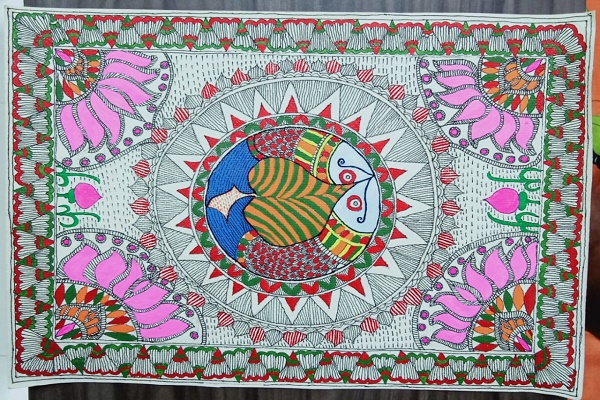
Read More: What is Traditional Art & its Importance for the Artist?
Modern Painting Styles And Techniques
Modern painting techniques have developed as a vibrant and fascinating force in the rich and diverse terrain of Indian art. From the vibrant hues of the Bengal School to Tyeb Mehta's abstract works, these styles have captivated artists and art fans alike.
The techniques utilized in modern Indian painting are as varied as the genres themselves. Some painters use classic methods such as brushwork and natural colors, while others experiment with new technology and unusual materials. The end result is a bright and varied combination of styles that both represent India's rich cultural past and push the boundaries of what is possible in modern art.
However, their influence on the contemporary art scene is arguably the most important component of modern painting techniques in India. A new generation of artists has been inspired by these techniques to use their artwork to explore their own cultural identities and personal experiences.
Modern painting techniques have also become a tool of social and political commentary in a country as diverse and complicated as India, giving voice to neglected populations and questioning prevailing narratives. From Arpana Caur's feminist works to Atul Dodiya's satirical paintings, these forms have proven a potent force for social change and cultural reform.
So, whether you're an art aficionado or simply admire the beauty and richness of Indian culture, current painting techniques in India provide an enthralling peek into this ancient land's rich creative heritage.

Fusion of Traditional and Modern Techniques in Contemporary Indian Art
Indubitably, the fusion of traditional and modern techniques in contemporary art has garnered noteworthy acclaim from connoisseurs of art worldwide. Numerous examples of such commendable works of art abound, which amalgamate traditional Indian artistic techniques with modern art forms, thereby resulting in a distinct and captivating visual appeal.
One exemplary instance of contemporary Indian art that incorporates traditional and modern techniques is the work of artist Bharti Kher. Kher's artwork, "The Skin Speaks a Language Not Its Own," merges the ancient Indian practice of bindi application with contemporary sculptural installation. The artwork features a mammoth sphere covered in bindis of various sizes and colors, with each bindi serving as a metaphor for individual identity, culture, and history. The amalgamation of the ancient and the modern in this work of art renders it an iconic representation of contemporary Indian art.
Another noteworthy example of the fusion of traditional and modern techniques in contemporary Indian art is the work of artist Jitish Kallat. Kallat's artwork, "Covering Letter," draws inspiration from Mahatma Gandhi's letter to Adolf Hitler in 1939. The artwork features a large-scale installation comprising 365 pieces of bone china plates, each inscribed with a letter from Gandhi to Hitler. The plates, arranged in a linear fashion, form a train that represents the journey of human civilization. The juxtaposition of Gandhi's letter, an archaic form of communication, with modern technology in the form of bone china plates, makes for an intriguing work of art.
Both culturally and aesthetically, the blending of ancient and modern approaches in current Indian art is highly relevant. It gives artists the chance to delve into their history and legacy while combining cutting-edge methods and tools. That creates a unique and distinctive artistic expression. Which facilitates communication between the past and present by acting as a link between tradition and modernity. This enables creators to produce singular works that connect with audiences all over the world.
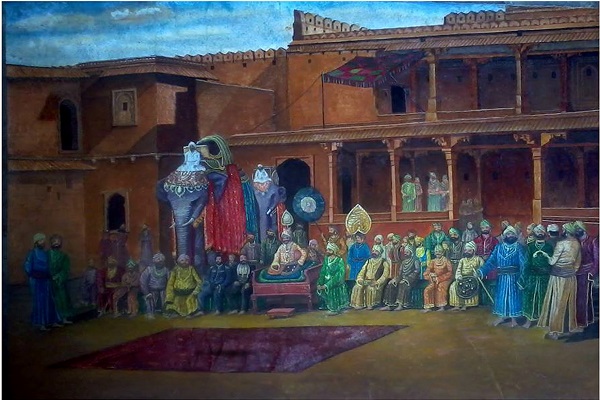
Interesting Blog: Recalling Traditional Art in Modern India
Cultural Significance of Traditional Indian Art in the Contemporary Art Scene
Traditional Indian art's cultural significance on the modern art scene, particularly within the Indian creative environment, cannot be overstated. Traditional Indian art traditions have had a huge effect on the present Indian art scene, laying the groundwork for the development of the country's myriad modern creative forms.
It's inspiring to see how contemporary artists have expertly reworked classic Indian art forms in a contemporary environment, giving fresh life to centuries-old traditions. This not only displays the variety of Indian art but also the energy of current Indian artists who have effectively married old techniques with modern sensibilities.
Without a question, cultural legacy is important in modern Indian art. And it is critical that we recognize and conserve these rich traditions while also enabling them to grow in a contemporary setting. By doing so, we help to preserve India's rich and diverse cultural heritage and promote a creative discourse that is authentically Indian while still being relevant to a worldwide audience.
Role of Indian Art Galleries in Showcasing Contemporary Indian Art
The world of Indian art galleries has a very brief history. This art offers diversity in terms of styles and genres that no other art could offer in the world. The famous art that is displayed in the galleries are paintings, sculptures, installation art, video, and performance.
Moreover, Indian art galleries are crucial in bringing current Indian art to a wider audience and promoting it. They organize shows that showcase the most recent trends and styles in Indian art as well as a place for exhibiting the work of both recognized and up-and-coming artists. The galleries also provide artists a platform to engage with critics, art collectors, and other key figures in the business while facilitating the sale and acquisition of works of art.
Furthermore, Indian art gallery plays an important role in the preservation and promotion of indigenous Indian art forms. Several galleries work closely with traditional artisans and crafters to promote their work and to create cooperation chances with modern artists. These galleries highlight India's cultural history and develop a wider respect for its creative traditions by displaying traditional Indian art alongside modern items.
In conclusion, Indian art galleries play an important role in the Indian art scene, supporting and promoting artists, maintaining traditional art forms, and introducing audiences to some of the most compelling and original artwork created in India today.
Also Check: Traditional Art- Let’s Meet Our Artistic Roots
End Note
It is undeniable that the amalgamation of traditional Indian art with modern techniques has given birth to resplendent and dynamic modern paintings in India. By venturing into the creative exploration of traditional art forms, contemporary Indian artists have been able to fabricate works of art that mirror the country's multifaceted culture and society. The popularity of contemporary Indian art burgeons in galleries and museums unequivocally contributes to cultural exchange and has a profound impact on the global art scene.
Indian art galleries have a pivotal role to play in promoting and preserving traditional Indian art, ensuring that it remains relevant and accessible to future generations. The fusion of traditional Indian art with modern paintings will continue to be an indispensable aspect of the country's rich cultural heritage as we surge ahead, reflecting the past while embracing the present and the future.











